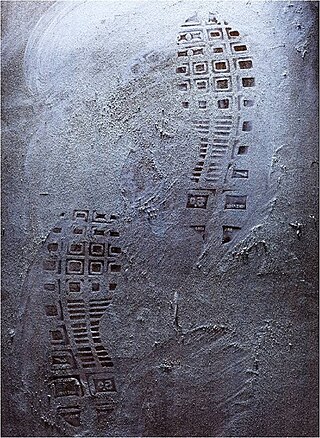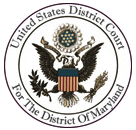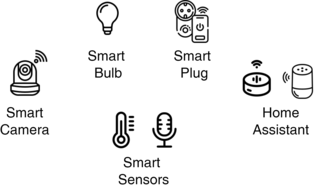An expert witness, particularly in common law countries such as the United Kingdom, Australia, and the United States, is a person whose opinion by virtue of education, training, certification, skills or experience, is accepted by the judge as an expert. The judge may consider the witness's specialized opinion about evidence or about facts before the court within the expert's area of expertise, to be referred to as an "expert opinion". Expert witnesses may also deliver "expert evidence" within the area of their expertise. Their testimony may be rebutted by testimony from other experts or by other evidence or facts.

In the United States, the Miranda warning is a type of notification customarily given by police to criminal suspects in police custody advising them of their right to silence and, in effect, protection from self-incrimination; that is, their right to refuse to answer questions or provide information to law enforcement or other officials. Named for the U.S. Supreme Court's 1966 decision Miranda v. Arizona, these rights are often referred to as Miranda rights. The purpose of such notification is to preserve the admissibility of their statements made during custodial interrogation in later criminal proceedings. The idea came from law professor Yale Kamisar, who subsequently was dubbed "the father of Miranda."

Authentication is the act of proving an assertion, such as the identity of a computer system user. In contrast with identification, the act of indicating a person or thing's identity, authentication is the process of verifying that identity. It might involve validating personal identity documents, verifying the authenticity of a website with a digital certificate, determining the age of an artifact by carbon dating, or ensuring that a product or document is not counterfeit.

Discovery, in the law of common law jurisdictions, is a pre-trial procedure in a lawsuit in which each party, through the law of civil procedure, can obtain evidence from the other party or parties by means of discovery devices such as interrogatories, requests for production of documents, requests for admissions and depositions. Discovery can be obtained from non-parties using subpoenas. When a discovery request is objected to, the requesting party may seek the assistance of the court by filing a motion to compel discovery.

Computer forensics is a branch of digital forensic science pertaining to evidence found in computers and digital storage media. The goal of computer forensics is to examine digital media in a forensically sound manner with the aim of identifying, preserving, recovering, analyzing and presenting facts and opinions about the digital information.

Digital forensics is a branch of forensic science encompassing the recovery, investigation, examination, and analysis of material found in digital devices, often in relation to mobile devices and computer crime. The term "digital forensics" was originally used as a synonym for computer forensics but has expanded to cover investigation of all devices capable of storing digital data. With roots in the personal computing revolution of the late 1970s and early 1980s, the discipline evolved in a haphazard manner during the 1990s, and it was not until the early 21st century that national policies emerged.
Holmes v. South Carolina, 547 U.S. 319 (2006), was a decision by the United States Supreme Court involving the right of a criminal defendant to present evidence that a third party instead committed the crime. The Court vacated the rape and murder conviction in South Carolina of a man who had been denied the opportunity to present evidence of a third party's guilt, because the trial court believed the prosecutor's forensic evidence was too strong for the defendant's evidence to raise an inference of innocence. The Court ruled unanimously that this exclusion violated the right of a defendant to have a meaningful opportunity to present a complete defense, because the strength of a prosecutor's case had no logical relationship to whether a defendant's evidence was too weak to be admissible.

Forensic photography may refer to the visual documentation of different aspects that can be found at a crime scene. It may include the documentation of the crime scene, or physical evidence that is either found at a crime scene or already processed in a laboratory. Forensic photography differs from other variations of photography because crime scene photographers usually have a very specific purpose for capturing each image. As a result, the quality of forensic documentation may determine the result of an investigation, in that with the absence of good documentation, investigators may find it impossible to conclude what did or did not happen.
Inevitable discovery is a doctrine in United States criminal procedure that permits admission of evidence that was obtained through illegal means if it would "inevitably" have been obtained regardless of the illegality. It is one of several exceptions to the exclusionary rule, or the related fruit-of-the-poisonous tree doctrine, which prevent evidence collected in violation of a defendant's constitutional rights from being admitted in court.

Mobile device forensics is a branch of digital forensics relating to recovery of digital evidence or data from a mobile device under forensically sound conditions. The phrase mobile device usually refers to mobile phones; however, it can also relate to any digital device that has both internal memory and communication ability, including PDA devices, GPS devices and tablet computers.

Lorraine v. Markel American Insurance Company, 241 F.R.D. 534, is a case in which a landmark decision about the admissibility and authentication of digital evidence was set down in the form of a 100-page opinion by Magistrate Judge Paul W. Grimm.
State vs Ari David Levie was a decision of the Hennepin County District Court, File No. K2-03-106, considered and decided by Randall, Presiding Judge.
The Scientific Working Group on Imaging Technology was convened by the Federal Bureau of Investigation in 1997 to provide guidance to law enforcement agencies and others in the criminal justice system regarding the best practices for photography, videography, and video and image analysis. This group was terminated in 2015.
The Trojan horse defense is a technologically based take on the classic SODDI defense, believed to have surfaced in the UK in 2003. The defense typically involves defendant denial of responsibility for (i) the presence of cyber contraband on the defendant's computer system; or (ii) commission of a cybercrime via the defendant's computer, on the basis that a malware or on some other perpetrator using such malware, was responsible for the commission of the offence in question.

Audio forensics is the field of forensic science relating to the acquisition, analysis, and evaluation of sound recordings that may ultimately be presented as admissible evidence in a court of law or some other official venue.
Forensic search is an emerging field of computer forensics. Forensic search focuses on user created data such as email files, cell phone records, office documents, PDFs and other files that are easily interpreted by a person.

The Public Prosecution Service v William Elliott and Robert McKee [2013] UKSC 32 is a case decided by the Supreme Court of the United Kingdom concerning admissibility of electronic evidence obtained from an electronic fingerprint reader unit that had not been approved by the Secretary of State as required by Article 61(8)(b) of the Police and Criminal Evidence Order 1989.
Gates Rubber Company v. Bando Chemical Industries, Ltd., et al. is a decision by the U.S. district court for the District of Colorado from May 1, 1996. It is considered a landmark decision in terms of expert witness court testimony in questions of electronic evidence and digital forensics.
Fileless malware is a variant of computer related malicious software that exists exclusively as a computer memory-based artifact i.e. in RAM. It does not write any part of its activity to the computer's hard drive, thus increasing its ability to evade antivirus software that incorporate file-based whitelisting, signature detection, hardware verification, pattern-analysis, time-stamping, etc., and leaving very little evidence that could be used by digital forensic investigators to identify illegitimate activity. Malware of this type is designed to work in memory, so its existence on the system lasts only until the system is rebooted.

IoT Forensics is a branch of Digital forensics that has the goal of identifying and extracting digital information from devices belonging to the Internet of things field, using a forensically sound and legally acceptable process.









